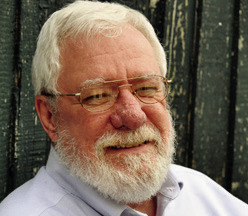I’ve confessed before that I enjoy picking through old cookbooks, especially those about Louisiana cuisine. Part of the reason I like them is that they are filled with interesting recipes, but I also like them because they can tell us something about the place and time that they come from.
That’s why I was intrigued when I came across “Creole Cooking Recipes,” a curious little pocket-sized paperback that must have been given away in the 1940s by the Evangeline Pepper & Food Products Company of St. Martinville. The company made the modest pledge that just one drop of Evangeline Hot Sauce “makes good food taste better.” The book makes the slightly more grandiose claim that the hot sauce “made Louisiana French cooking famous.”
The company was owned and operated by the Buillard family, and it made more than hot sauce. You could place an order directly to the factory for a 5½-ounce bottle of Steak Sauce (fifteen cents), a 5-ounce bottle of Worcestershire Sauce (fifteen cents), a 10½-ounce jar of Home Made Chili Sauce (a quarter), an 8-ounce jar of Creole Mustard (ten cents), a 12½-ounce jar of Salad Mustard (fifteen cents), or a 2½-ounce jar of Powdered Red Pepper (fifteen cents). The company also offered Sausage Seasoning, Cut Okra in cans, canned Okra & Tomatoes, Distilled Vinegar, Home Made Okra Soup, and Old Tom Open Kettle Pure Ribbon Cane Syrup “made the old fashion way with direct fire under the kettles.”
The booklet contains recipes we might recognize – Chicken à la Sauce Piquant, Crab Gumbo à la Creole, Cannards Smothered with Turnips, Ail-Au-Lie Mayonnaise (probably coming from the Aioli Club in which south Louisiana chefs tried to outdo each other in preparing gourmet meals), Creole Rabbit, Creole Cabbage, Creole Cereal or “Kush-Kush,” and a half-dozen things to do with yams, all interspersed among “facts” about St. Martinville and the Evangeline Country.

Bradshaw
The little book lists the local cemetery among places for visitors to see, pointing out that there are “more people buried in the cemetery than are alive in the town.” That’s probably true in a lot of little towns with long histories. It describes the Evangeline Oak as “America’s most famous tree” and St. Martinville as “America’s most interesting town” – and it also contains the amazing claim that the first women’s hats to be worn in the United States were created because of an accident that didn’t happen in St. Martinville in 1795.
“The originator was a belle of the olden days and a member of one of the oldest and distinguished families, the DeBlancs,” we are told. “Tonton DeBlanc was known for her beauty. Her complexion was unsurpassed. As was the custom for many centuries, she wore a sunbonnet. The hat was unknown in those days.
“It seems strange that such a well known fashion as women’s hats should be founded by accident, but that is how it originated. Tonton DeBlanc, who founded the fad, heard a commotion outside her door. Upon inquiry she was told that a child was crushed by a vehicle. Searching for her sunbonnet, she was unable to find it, so she took her brother’s hat and put it on her head.
“The accident proved to be a false alarm, but the little belle had found the hat becoming, so she entered a millinery shop and ordered a hat for her. She paid $5.00 for the hat and before too long everyone was wearing hats. This is how . . . the hat began in the historical old town of St. Martinville.”
Tonton may have set a fashion trend, but I have to raise a suspicious eyebrow over the claim of invention. Women had been covering their heads with something each Sunday since the Middle Ages, when the Catholic church decreed that women must cover their heads and men must uncover theirs. St. Martin de Tours church was established in St. Martinville in 1765, so it stands to reason that the ladies in “America’s most interesting town” must have been wearing something fancier than sunbonnets thirty years before the nonaccident.
But the fatal flaw comes when we are told that she “entered a millinery shop and ordered a hat for her.” By definition, “millinery” means women’s headwear. If there was already a shop in town, I’d be willing to bet it offered more than a simple garde soleil.
You can contact Jim Bradshaw at [email protected] or P.O. Box 1121, Washington LA 70589.

